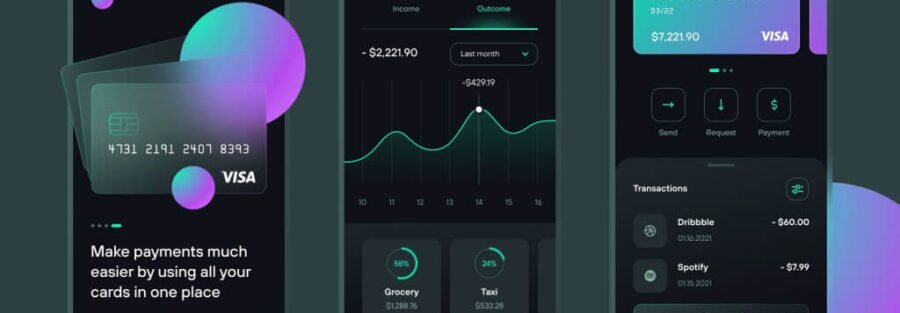Africa is experiencing a digital transformation that is reshaping industries and creating new opportunities for innovation. As a product designer, particularly in the fields of UI and UX design, you have the potential to play a pivotal role in this evolution. However, standing out as the best product designer in Africa requires more than just mastering design tools; it involves understanding local contexts, embracing innovation, and committing to continuous professional growth. Here’s how you can excel in this dynamic field and become a sought-after product designer across the continent.
1. Master the Core Skills of UI/UX Design
To become the best, you must first be proficient in the foundational aspects of UI/UX design. This includes a deep understanding of user experience (UX) principles, user interface (UI) design, interaction design, and visual design.
-
Wireframing and Prototyping: These are essential skills for visualizing and testing your design ideas before full development. Tools like Figma, Adobe XD, and Sketch are industry standards, and mastering them will allow you to create interactive prototypes that can be tested and refined based on user feedback.
-
User Research and Testing: To design effectively for diverse African audiences, you need to understand their needs, pain points, and behaviors. Conducting user research and usability testing ensures that your designs are user-centered and tailored to the specific contexts of your target audience.
-
Information Architecture: Organizing content in a way that users can easily navigate is crucial. Good information architecture helps in creating intuitive designs that enhance user satisfaction and retention.
2. Understand the African Context
Africa’s diversity presents unique challenges and opportunities for product designers. To excel, you must design with a deep understanding of the local contexts, including cultural nuances, economic conditions, and technological constraints.
-
Design for Emerging Markets: Africa is home to emerging markets with distinct characteristics. For example, mobile-first design is critical due to the high prevalence of mobile phone usage compared to desktop computers. Additionally, designing for low-bandwidth environments ensures that your products are accessible to users in areas with limited internet connectivity.
-
Cultural Sensitivity: Africa’s cultural diversity requires designers to be culturally sensitive. Understanding local languages, customs, and user behaviors can significantly impact the effectiveness of your designs.
-
Design for Social Impact: Many African countries face challenges such as poverty, education, and healthcare. As a product designer, you have the opportunity to create solutions that address these challenges and contribute to social impact. Agri-Tech, FinTech, and EduTech are some of the sectors where design innovation can make a significant difference.
3. Leverage Innovation and Technology
Innovation is at the heart of Africa’s digital transformation. As a product designer, staying ahead of design trends and technological advancements is essential.
-
Embrace New Design Trends: Stay updated with global and regional UI/UX design trends. This includes responsive design, microinteractions, and dark mode. Incorporating these trends into your work can enhance the user experience and keep your designs modern and competitive.
-
Adopt Cutting-Edge Tools and Techniques: Familiarize yourself with the latest design tools and technologies. Tools like InVision, Zeplin, and design systems help streamline the design process and improve collaboration with developers and stakeholders.
-
Focus on Sustainable Design: Sustainability is becoming increasingly important in design. Consider how your designs can promote sustainable practices, whether through reducing resource usage in digital products or designing for long-term user engagement.
4. Collaborate and Communicate Effectively
Success as a product designer in Africa also depends on your ability to work effectively with diverse teams and stakeholders.
-
Cross-Functional Collaboration: Work closely with product managers, engineers, marketers, and business stakeholders to ensure that your designs align with broader project goals and strategies. Effective collaboration leads to better end-to-end design solutions.
-
Communication Skills: Clearly communicate your design decisions, both visually and verbally. Being able to articulate the rationale behind your designs helps in gaining buy-in from stakeholders and ensures that the final product stays true to the user-centered vision.
5. Invest in Continuous Learning and Professional Growth
The design field is constantly evolving, and the best designers are those who commit to continuous learning.
-
Pursue Design Mentorship: Seek out mentorship opportunities where you can learn from experienced designers and share your knowledge with others. Mentorship is a valuable way to accelerate your growth and expand your professional network.
-
Expand Your Skillset: In addition to core UI/UX skills, consider learning complementary skills such as coding (HTML/CSS/JavaScript), data analysis, or project management. These skills can make you more versatile and enhance your ability to contribute to different aspects of product development.
-
Build a Strong Portfolio: Your portfolio is your calling card as a product designer. Regularly update it with your best work, showcasing a range of projects that demonstrate your expertise in different areas of design, from wireframes to high-fidelity prototypes.
6. Contribute to Africa’s Design Community
Becoming the best product designer in Africa also involves giving back to the community and helping to shape the future of design on the continent.
-
Engage with Local Design Communities: Participate in design meetups, conferences, and online forums. Sharing your knowledge and learning from others helps build a strong, supportive design community in Africa.
-
Advocate for User-Centered Design: Champion the importance of user-centered design within your organization and the broader tech industry. By advocating for design that truly meets the needs of African users, you contribute to the overall quality and impact of digital products on the continent.
Conclusion
Becoming the best product designer in Africa is a journey that requires dedication, adaptability, and a deep commitment to both your craft and the people you design for. By mastering core design skills, understanding the unique contexts of the African market, embracing innovation, and investing in continuous growth, you can position yourself as a leading designer who not only excels in the field but also makes a meaningful impact on the continent’s digital future. As Africa continues to rise as a hub of innovation, the opportunities for talented product designers are boundless—seize them and lead the way.



